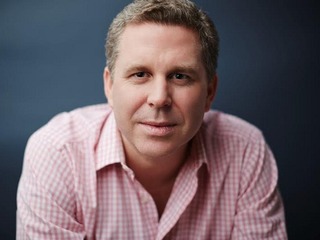

For the last two years, Vator has been interviewing investors putting money into early stage companies, meaning anything from pre-seed to Series A, in the Meet the VC series. In that time, we’ve interviewed 93 investors, and we’ve been able to gather their thoughts on the venture capital ecosystem, what they like to invest in and how they became part of the VC world.
One of the most important questions we ask is, “What do you look for in companies that you put money in? What are the most important qualities?”
There have been many different answers to this question, but the main themes have remained remarkably similar, with two or three theme emerging consistently across nearly every VC we talked to.
- The most popular answer, by far, is that VC are looking the team or the founders. An overwhelming 80 out 93, or 86 percent, of mentioned this in their answer.


“I’m also really looking for a bit of a chip that’s going to drive them to go above and beyond. A lot of the time it ends up being people who have felt stifled in their past job. They might have had a boss who didn’t listen to their ideas, or didn’t give them the level of responsibility that they thought they could handle. It’s almost always people who feel like they weren’t able to achieve their full potential in whatever it was, whether it’s due to management, or what the company was doing, and that this is their chance to prove to the world what they’re made of. I find that those people, they really, really care about the thing that they’re building, and they go well above and beyond.”


“There’s something about being in this business a long time, you get pattern recognition around highly qualified people, who are smart, driven and passionate about what they’re doing. There are intangibles, like grit and perseverance, and hustle and cleverness. It’s not enough to be smart, you have to be street smart in order to build a business against competitive pressure, limited capital and resources, lack of momentum and brand. It takes a special group of people to build something from nothing.”


“Everyone who comes in, in some ways, has a different profile. There has to be something in their background or experience. What is it about the team or founder, around that domain, that gives them a leg up or an advantage, either through knowledge or experience, or some problem they’ve experienced, either personal or professional, that allows them to build a high quality product or service better than others?”


“I’m trying to identify founders that I think can be the founders of movements in new or existing categories. The thing I spend an inordinate amount of time really digging into is the ‘why?’ Why do you need to do this? What is it about this idea that’s really in alignment with you? What’s driving you crazy? You feel like you’ve got the right approach, why? And I think what comes out in that back and forth, and sometimes those conversations will take hours, can be a strong signal of how special the founder is and how disruptive their vision may be. We don’t spend much time talking about market size, I’m really digging into their motivation, the excitement around why a founder is obsessed with their idea. I think you ultimately have to walk away from every conversation, especially when it’s at the very beginning stages and be excited by the passion of the founder, the depth of their thinking, the quality of their early team, but you also do have to go back and double check in your brain, ‘Does this make sense?'”


“The team is the number one component. In that team we are looking for previous entrepreneurial experience, even if was a non-scalable business they started in high school, as long as they learned some elementary entrepreneurial lessons we can build upon. We look at the composition of the team and believe that each team needs a visionary, a core execution person and some tech talent. We also look at the team to understand how they know each other, for how long and in what ways they have worked together. As you know, building a startup is an awesome undertaking and a hugely demanding work experience all at once and the core team needs to thrive in high stress situations. We also try to understand the ways in which they have validated and de-risked on their own. We call that the “scrappiness factor.” The team needs to have a deep passion for what they are building and approach each opportunity and obstacle with creativity.”


“We are attracted to people who are passionate about their customer, not just their product. If a team comes to us with really cool tech already mostly built and that they have spent little, if any, time with likely users, that is less interesting to us than a company that may still be at the early stages of building a product, but is validating it across a many different customers to validate what they really need.”
- The next most popular answer was the size of the market, which 29 VCs, or 31 percent, included in their answer.


Where we make money is when we get the market timing and the size right, as well as the right market fit. When we get all three of those together we know we have a winning company.
Of course the team is also important, but that goes into product market fit, because they are selling the companies products, but by far, those three elements are the most important.”


“Before you invest you do have to have some interest in the market, some understanding about the size of the market opportunity. It has to have a big market, because the opportunity has to be big enough to be VC backable. Those things are fairly consistent across all VCs and all of those things we look for as well, so it’s not like we’re throwing that out the window in the face of, ‘Oh, this is somebody really interesting, but they want to create the best bodega in New York.’ That’s obviously not a VC opportunity.”


“With market opportunity or size, it comes down to the economics of how funds work. We are a minority shareholder, investing early. The average mortality rate is 40 to 50 percent who don’t make it. The dynamics of how venture works is that companies have to be addressing large market opportunities, so they can scale the business to a size where the return on investment is successful. They have to generate good returns to offset losses.
There’s no magic number, but a good rule of thumb is that is has to be at least a $1 billion opportunity that is addressable by the company. Even if they aren’t a leader, they can still get to a significant revenue run rate, and that ownership stake will be worth a lot.”


“At the moment-of-inception there isn’t a whole lot of experience, or external proof, to the company, so we really focus on three things. One is our sense, built up from all these touches in our focus areas, of what’s actually going on in that market. Is it a great market? Will it grow? Is there a need? Are there customers? Is there money? We’ve found, over long careers, that you can be the greatest entrepreneur on Earth, but if you’re in a market where there’s not a lot of fundamental interest, you, unilaterally, can’t change human behavior. So we look for market where we believe we can see big opportunities, and we’re looking for companies in those markets.”


Hunter Walk, Founder of Homebrew VC
“For me, problem size is the proxy for market size, since very often the most exciting businesses actually don’t match up to a well-understood market. Or you’re likely to misjudge their market potential if you look at the v1 vs the ultimate vision. If you thought Uber was about black car rental you passed on the seed round. If you thought it was about transportation and logistics, you backed them.”
- Next was the product, which 11 VCs, or 12 percent, mentioned


“We’re looking for fundamental innovation, technology innovation around these different products. You want a really strong indication that this really is a problem that they’re trying to solve, and then that what they’re developing is a true pain killer, in the sense that there’s going to be a strong demand for this solution once they really start to roll it out. And that is truly is a fundemental innovation, and not something that’s just sort of incremental or a “nice to have.”


“We also ask if it is a big problem that they are solving. Can we imagine millions of people using or paying for this? Is this big enough to be addressable?
Often times the market size for a particular product is zero. Riot Games, for example, the free to play game market was zero. How do you size the market if they are doing what’s never been done before? It’s always important for VCs to be optimistic, not pessimistic. There are a million reasons not to do deal. You can say, ‘What happens if video games can’t be delivered the same way as music and movies? Can you even create a community for collaboration and competition? Can you see that being a very big thing?’ In the earliest stages it doesn’t make sense to be granlar in the market size.”
- That was followed by product market fit, with six VCs, or 6.5 percent, including that in their answer


“The most important attributes for us include a working product and a demonstration of product-market fit. Product-market fit can be demonstrated through a successful beta program, a critical mass of customers or users, or early revenue generation.”


“We rely heavily on traction. Healthy traction demonstrates product/market fit and is valuable in evaluating a company’s potential long-term viability. Traction is quantitative evidence of market demand. Ideally, it should communicate momentum in market adoption. Once we’ve identified a company with traction is comes down to the founders (team) and market.”
In addition to the above answers, three VCs said business model, traction, growth and customer engagement. Two said opportunity, timing, consumer value, valuation, potential for scale, market knowledge, and addressing big problems.
One VC each said proprietary data, vision, network effect, differentiation, clear path to annual recurring revenue, customer acquisitions, path to profitability, line of sight to an exit, opportunity for customers to grow their usage over time, revenue, a vision worth fighting for, market validation, development velocity, companies that own a vertical market on a unique platform, design focus, capitalization of the company, legal and regulatory risks, macro economic risks, having a clear legal structure in place, route to market and stage fit.
(Image source: novobrief.com)






























